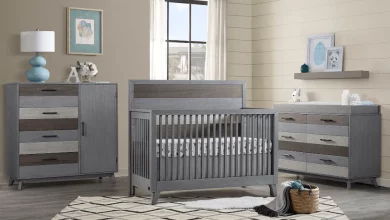Bifocal vs. Multifocal Lenses: Uncovering the Differences

Introduction to bifocal and multifocal lenses
When it comes to vision correction, it’s crucial to understand the difference between bifocal and multifocal lenses. Bifocal lenses provide two different optical powers for near and distance vision needs. Multifocal lenses, on the other hand, provide seamless transition between different powers to meet different visual needs. These lenses have evolved over time to provide innovative solutions for individuals seeking optimal multifocal glasses .
Bifocal lenses are multifocal lenses with two independent optical powers. Simply put, they glue one lens to another. The main part of the lens (called the “carrier”) is most often used for long distances, while the smaller “parts” bonded to it are most often used for reading.
Multifocal lenses, also called progressive lenses, contain three different optical powers per lens. These capabilities allow the wearer to perform close work (such as reading a book), mid-range work (such as reading on a computer), and long-distance viewing (such as driving) without having to use different glasses.
Bifocal lenses are used for:
As multifocal lenses, bifocal lenses are great for people who need optical correction for two different distances, such as distance and reading, as it means they don’t need to carry around two pairs of glasses. The two parts of the lens don’t always have to be used for long distance and reading.
Depending on the needs of the wearer, they may be long range at the top and mid range at the bottom. Truck drivers who need to view gauges from a distance may find these useful. People who sit at desks for long periods of time may prefer center correction as the primary lens because their reading abilities are at a disadvantage in that segment.
Difference Between Bifocal Lenses and Multifocal Lenses
Bifocal and multifocal lenses vary greatly in optical design and construction. Bifocal lenses have two different optical powers, each dedicated to specific visual needs. In contrast, multifocal lenses incorporate seamless transitions between different powers, ensuring a smooth transition from near vision to distance vision.
Advantages and Disadvantages of Bifocal Lenses
Bifocal lenses provide clear distinction between near and distance vision, making them an affordable option for people with certain vision impairments. However, visible lines between lens sections and limited field of view in the midfield are clear disadvantages associated with bifocal lenses.
Advantages and Disadvantages of Multifocal Lenses
Multifocal lenses provide seamless transitions for different visual needs, enhancing aesthetic appeal. While providing enhanced vision correction, multifocal lenses may require a potential adjustment period for the user and be more costly than bifocal lenses.
Why do I need bifocal or multifocal?
As we age, it becomes increasingly difficult for us to focus on nearby objects. This is a completely normal process called presbyopia. The purpose of the lens in our eyes is to change shape when we focus on objects at different distances. As we age, the lens becomes less flexible, so even if you have never worn prescription glasses before, you will need help reading. . If you have worn glasses before, you will now need a different prescription to read. Some people who are nearsighted may find that they can read if they take off their glasses.
Who can benefit from bifocal and multifocal lenses
Bifocal lenses benefit people with certain nearsightedness or distance vision deficiencies, as well as aging people with presbyopia. Multifocal lenses cater to users who need clear vision at multiple distances, including active people with dynamic vision needs.
Where can I buy bifocal and multifocal glasses?
Today, you need to choose focal lenses for your reading needs, and for bifocals and multifocals, we can help discuss them with you when choosing eyeglass frames.
You can view our full range of eyewear here.
I am very happy with different glasses, should I try bifocal or multifocal?
If you have no problems with glasses alone, there is unlikely to be an advantage in trying bifocal or multifocal glasses. Single vision lenses should also provide the best all-round vision.
When wearing focus lenses, you’ll enjoy:
- Excellent focusing and reduced eye fatigue
- Excellent balanced view
- highest level of comfort
- Fully customized lenses
- Easily adapt between regions
Conclusion:
Understanding the key differences between bifocal and multifocal lenses is crucial to choosing the most appropriate vision correction option. It is recommended to consult an eye care professional for personalized advice tailored to fashion reader glasses individual vision needs.
All in all, unraveling the differences between bifocal and multifocal lenses is crucial for those exploring vision correction options. Each type of lens has unique benefits and considerations, making a personalized consultation with an eye care professional a valuable step toward achieving optimal vision correction.








